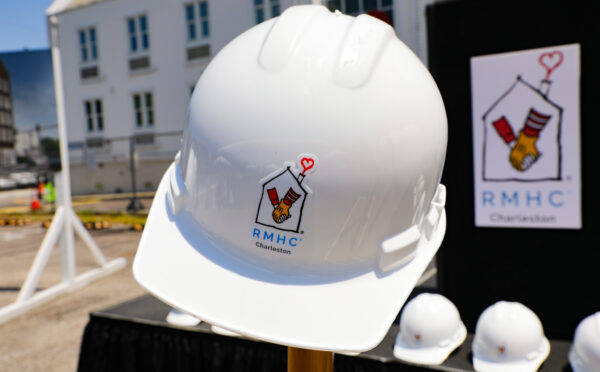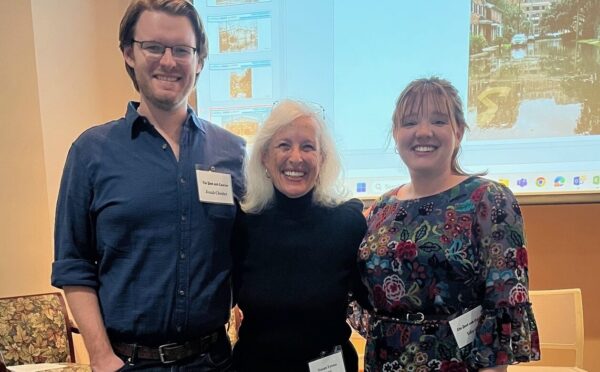Edie Blakeslee, Vice President of Grantmaking & Community Leadership at CCF, shares her thoughts on the importance of long-term recovery following Hurricane Matthew
For the past few weeks, I’ve listened in to nightly calls with South Carolina Volunteer Organizations Active in Disaster, a coordinating body for disaster response that helps organizations stay connected and collaborate on recovery efforts. Last week’s calls started with positive news. South Carolina is now operating at OPCON 4, just one emergency level above OPCON 5, or normal operations.
Even after the state returns to normal operations, life will still be far from normal for the many people affected by Hurricane Matthew in our service area of coastal South Carolina. As this storm recedes into the past for those of us fortunate enough to escape unscathed, we must not forget our friends and neighbors who need our support in the months, if not years, it will take to fully recover.
Additionally, we must not neglect to take a hard look at our infrastructure and systems with the aim of investing in our resilience to inevitable future disasters – a role for which I believe private philanthropy is uniquely suited.
Hurricane Matthew, coming just one year after the historic 1,000 Year Flood, underscored the importance of disaster recovery. On the eve of this year’s disaster, dams across the state were still unrepaired from the previous year’s damage. National publication Insurance Journal reported that Hearts & Hands Disaster Recovery, the flooding case management provider for South Carolina, still had more than 3,600 clients on active cases from the 1,000 Year Flood as of August 2016, the vast majority of whom still live in unsafe homes suffering from issues like mold infestation and leaking roofs.
We don’t need to guess how those 3,600 individuals fared this month.
The town of Nichols, SC is another example. This small, rural community is still underwater. The entire town, whose residents are mainly senior citizens and most of whom lack flood insurance, had to evacuate. How will they come home when it is safe? How will the three small businesses in town, having just recovered from the 1,000 Year Flood, recover from this latest storm? Or future storms?
Philanthropy is well-positioned to leverage the resources of government, business, nonprofits and concerned citizens to focus attention on long-term needs. Removed from the regular pressures of meeting the bottom line, philanthropic organizations can look at the big picture to strategically fill gaps in capital and ensure there are resources to focus on the future.
The efforts of organizations and agencies on the front lines of disaster response are and will continue to be critical in any emergency situation. Grants from FEMA, volunteer crews rebuilding homes, the service of the U.S. National Guard – these roles are just a few of those essential in responding to crisis.
With philanthropy, we can support disaster response during the storm and the recovery that follows, and we believe this kind of assistance is critically important in the immediate aftermath of a disaster. In addition, though, we see focusing resources on long-term investments such as infrastructure and housing as even more critical for our community, especially for our rural neighbors, families in poverty and senior citizens.
Federal dollars aren’t enough – private philanthropy truly must step up.
I’m hopeful for the future. We’re already seeing incremental change and adaptability in how we treat disaster situations. Governor Nikki Haley’s leadership in evacuating for Hurricane Matthew undoubtedly saved lives and improved upon past evacuations. The Red Cross also changed its volunteer protocols, now allowing volunteers to come and help immediately following a disaster, even if they haven’t gone through the full disaster training program. This mobilizes a new group of people to augment recovery efforts.
However, I urge us not to stop at incremental change. Working together we can do more than respond to today’s storm. Together, we can invest in our community’s resiliency to withstand all to come – hurricane or otherwise.
Coastal Community Foundation is supporting Hurricane Matthew recovery efforts in its service area through grants from the Disaster Response Fund. To donate to this fund, visit www.coastalcommunityfoundation.org/donate-today/, mail in a check with “Hurricane Matthew Recovery” in the memo line or submit a grant recommendation form from your donor-advised fund to the Disaster Response Fund.


